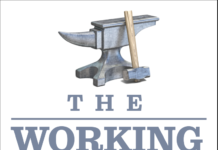.
.
Nearly two years ago, Finance Minister Bill English expressed a rather startling frank admission; that prisons were a “moral and fiscal failure” (see: Prisons: ‘moral and fiscal failure’?)
As the ODT article reported,
Mr English said the plans had been in the pipeline for some years and were part of “this Government’s policy and public pressure for tougher sentences and a safer community”. But, he added, he hoped it would be the last prison the Government built because “they’re very, very expensive: $250,000 a bed [in capital costs] and $90,000 [per prisoner] to run it, and when we’re tight for money, it would be good if we could have … less young people coming into the … pipeline where they start with a minor offence and end up with a 10-year sentence.”
Mr English might have dispensed with the phrase “when we’re tight for money” because if, for large numbers of those convicted of committing lesser crimes, prisons do not work – over time, considerable evidence shows, they make communities less safe rather than more – it is arguably irrelevant whether we are tight for money or not.
Acknowledgment: IBID
It was an unusually candid admission, as right wing politicians often use the “law and order” mantra to (a) frighten people and (b) promise to ‘crack down on crime’. National used this strategy in 2011,
.
.
One of National’s “get tough on crime” policies was it’s so-called “Three Strikes” law – the Sentencing and Parole Reform Act – passed two years ago in May, 2011.
The system of ‘strikes’ would be applied for after each conviction, and escalate sentencing;
* Strike one: Judge decides sentence, gives a warning, offender eligible for parole.
* Strike two: Judge decides sentence. No parole.
* Strike three: Maximum jail term for that offence. No parole, except for manslaughter (minimum non-parole period of 20 years).
The list of crimes covered by the Three Strikes law is listed here: Sentencing and Parole Reform Act.
On 26 May, then-Corrections Minister Judith Collins, rejected criticisms that a conviction under the Three Strike offences could be for something minor,
“This bill deliberately puts in place an escalating regime of penalties, and I make no apology for that. An offender who is being sentenced at stage three has committed a third serious violent offence and has received two previous warnings about the consequences of re-offending in this way.”
Acknowledgment: Controversy continues after three strikes bill passed
Despite Collins’ and other National/ACT MPs assurance, it appears that the Three Strikes law will soon swallow up Elijah Akeem Whaanga (21).
.
Acknowledgment: Dominion Post – Anger at 14-year strike 2 warning
.
Only psycopathic, rightwing nutjobs were applauding this tragic waste of human life, and subsequent waste of tax-payers’ money,
Justice Minister Judith Collins said the case showed the law was working. Sensible Sentencing Trust spokesman Garth McVicar agreed, saying the sentence of two-and-a-half years’ jail with no parole was “fantastic”.
Acknowledgment: IBID
Whaanga, according to the article (and reading between the lines) may be afflicted with foetal alcohol spectrum disorder – a nasty condition which affects the brain and mental developments of unborn babies within the womb. It is caused by alcohol consumption by the pregnant mother.
The symptoms can include,
- Learning disabilities,
- poor academic achievement, math skills, abstraction,
- difficulties with impulse control,
- social perception,
- problems with communication,
- memory,
- lack of attention,
- judgment
See: Wikipedia – Fetal alcohol spectrum disorder
Having worked with people with this condition, I can confirm that mental impairment can be considerable, and no less a disability than other intellectual/mental disabilities. In many instances, a low IQ is clearly apparent.
If Whaanga has FASD, then putting him away for fourteen years would be tantamount to locking someone up with a mental disability who has difficulty managing and balancing concepts of right, wrong, responsibility, and consequences.
As Judge Adeane said,
“When you next steal a hat or a cellphone or a jacket or a skateboard you will be sent to the High Court and there you will be sentenced to 14 years’ imprisonment without parole.”
It costs around $95,000 per year to keep a person in prison. To keep Whaanga in a cell for fourteen years will cost the taxpayer $1,300,000 .
If you think this is bad enough, imagine a hundred Whaanga’s at $1,300,ooo per person. We’re talking over $130 million.
If that is not insanity from our elected representatives – please tell me what is?
For $130 million the State could buy more effective social-support services, monitoring,and rehabilitation for people like Whaanga.
But that would take imagination and compassion. Thus far, National ministers appear to demonstrate precious little of either trait.
Well, New Zealanders got their “tough on crime” government.
Now it’s time to pay for it.
I wonder how many schools will have to close to pay for Three Strikes?
Addendum
As more and more prisoners spend decades behind bars for their third strike offence, it will be a boom time for private prison contractors such as SERCO. Expect SERCO shares to rise every time a third strike offender is convicted and sentenced to their privately-run prison.
Memo To Sharebroker,
Sell: Mighty River Power shares.
Buy: SERCO shares.
Memo to National ministers,
Close: ten more schools.
.
*
.
Acknowledgments
Newsdesk: New Zealand passes 3-strikes law (26 May 2010)
NZ Herald: Controversy continues after three strikes bill passed (26 May 2010)
Otago Daily Times: Prisons: ‘moral and fiscal failure’? (24 May 2011)
Dominion Post: Anger at 14-year strike 2 warning (28 April 2013)
.
.
= fs =









Highly recommend Roger Brooking’s book which includes this subject – Flying Blind (http://www.flyingblind.co.nz/).
Excellent! Thanks for that, Humph.
I’ll add the link to my blogsite rollcall.
Good article, but check your maths.
Thanks, Alan.
That’s what I get for proofreading my own writing… *facepalm*
The correct sums are;
$95,000 X 14 years = $1,330,000 (not $13,300,000)
Times that by 100 prisoners @ $1,330,000 = $133,000,000
Not quite the $1.3 billion I originally posited. But still a decent sum for effective social-support services, monitoring,and rehabilitation.
Love your work Frank, but just a typo there – its going to cost $1.3 million not $13.3 million to lock up Whaanga.
Either way, its still largely a waste of money which could be used for other things – just not as big as you’ve stated there 🙂
I don’t know if anyone has been mentioning yet that the three strikes rule could come in very handy for a right wing government to imprison environmental activitivists for ten or more years for doing next to nothing
Will environmentalists be carrying out violent acts of protest?
You might like to mac check what gas happened to both the crime and incarceration rates in the past few years as well.
By the way congrats on becoming a fully qualified medical professional Frank. I know it is a lot of hard work and time to do that.
Thanks for the semi-literate insight. Are you hungry? Have a Snickers mate. It’s on me.
If that doesn’t do it, I’ll see what I can do about shouting a joint. Mellow out man.
….and only this morning we get the news that the SFO will not go after Hanover, because … there is not enough there to successfully bring a prosecution.
Millions ripped off. Thousands lost their investments. Thousands lost their savings.
But we’ll happily jail a skateboard or hat stealer.
Personally, I think that says all one needs to know about where the just-us system is skewed
I cannot see any difference between Judge Tony Adeane’s reported remarks and what happened in the bad old days in the UK when stealing a sheep got you ten years in an Aussie penal colony.
I’d suggest you have a problem identifying differences then. In the days of penal deportation the authorities didn’t give you two warnings prior to imposing sentence and the sentence of deportation wasn’t restricted to violent crimes.
As usual, Gosman, you skirt around the main issue and raise irrelevant points or inane questions. It’s a shame it’s all just a game for you.
Try to address the issue raised in this blogpost.
Just once.
It might be a novel experience for you.
Which is what exactly?
Is it that you don’t think criminals who are convicted of a offence involving violence shouldn’t get the maximum non parole period on their third offence?
Or is it that in your expert opinion the person involved in the situation you mention who has been convicted of two violent offences shouldn’t be subject to this law because of his medical condition?
You don’t seem able to talk in anything but a questioning format.
And the irony is that each of your three questions is addressed in my blogpost above. You simply haven’t bothered to read it; think about it; and come to a conclusion.
Try re-reading it and addressing the issues I raised. It’s really not that difficult.
The guy you are going in to bat for here was convicted on a violent offence. He wasn’t shoplifting or simply picked something while someone’s back was turned. He physically intimidated another human and committed an action as a result. You might like to excuse that sort of behaviour. I like living in a country that has laws protecting me from someone doing that repeatedly.
How’s that for addressing the issue?
Could you talk about the alternatives please? If we have someone who because of FASD continues to hurt people then what do we do? If a scaling up of prison terms is wrong then how do we prevent criminal behaviour and maintain justice for victims of crime?
What’s the best way forward here?
There are alternatives, Muerk. There are organisations (often non-profit groups) that are contracted by the Ministry of Health (via Life Unlimited), to monitor and mentor people with disabilities; addictions; and other difficulties.
Sometimes this includes independent supported living. Other times it involves more intensive residential support (live in support workers, for example).
For $1,330,000, you could buy a lot of support-care and monitoring – and at the same time keep people like Whaanga away from bad influences that prisons inevitably create.
These support organisations already exist in our community, but are largely invisible as the media never reports on their activities.
Based on what the media report states, it’s doable for Whaanga because we’re already doing it for other people who might otherwise be in prison.
It’s also a much cheaper option.
This item on Radio NZ this morning also sheds light on why spending more on incarceration, instead of alternatives, is self-defeating;
Assets seized from criminals – http://www.radionz.co.nz/national/programmes/ninetonoon/audio/2553556/assets-seized-from-criminals.asx
Catherine Ryan spoke with Roger Brooking, alcohol & drugs counsellor and author.
Saw an excellent film that looks at the drug war in America and makes a link with the private prison industry there. It’s called ” The House I live in’ directed by Eugene Jarecki. Shows what happens when there is a financial motive behind locking people up.
I recommend it to everyone.
Thanks for the post, Frank.
BTW I think the best way for everyone to deal with people like Gosman is to ignore them. As you correctly note, it’s just a game for him.
Thanks, Paul.
The issue of a “financial motive behind locking people up” is definitely one we should bear in in mind. It adds a whole new dimension to the the greater issue of imprisionment rates and rehabilitation (or lack thereoff).
Comments are closed.